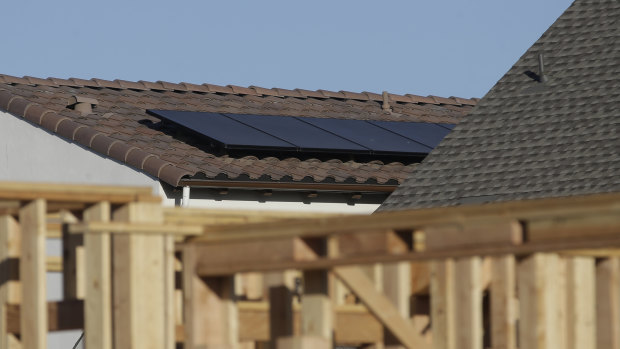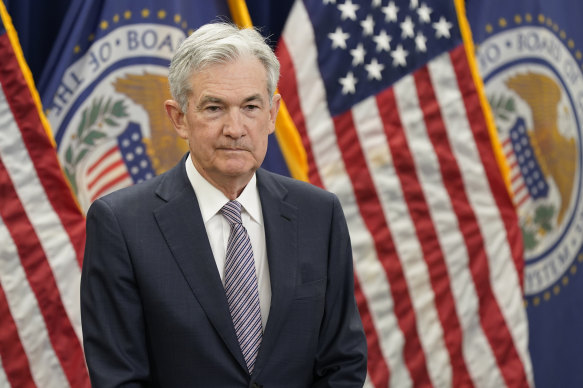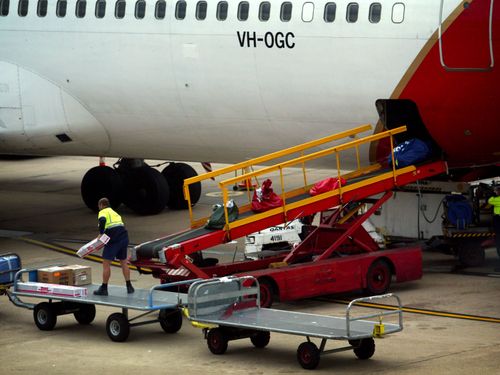“The Fed really wants to see the participation rate pick up, a higher tick in the unemployment, and easing wage pressure. We didn’t get any of that in July.”
On bitstamp.net, bitcoin was
The yield on the US 10-year note rose 14 basis points to 2.83 per cent.
On Wall Street, the S&P 500 and Nasdaq ended lower, while the Dow advanced. Tech stocks were mostly lower, with Tesla sinking more than 6 per cent.
One exception: Atlassian surged more than 16 per cent after its latest quarterly results.
Aurizon and Suncorp Group are scheduled to report results on Monday.
The pace will accelerate on Tuesday: Charter Hall Long WALE; Computer share; Coronado Mining; mega port; National Australia Bank; News Corp; and, REA Group.
Today’s agenda
not local data
Overseas data: Japan current account June; Euro zone Sentix investor confidence August
market highlights
ASX futures down 11 points or 0.16 per cent to 6903
- AUD -0.9% to 69.11 US cents
- Bitcoin
- On Wall Street: Dow +0.2% S&P500 -0.2% Nasdaq -0.5%
- In New York: BHP +2.4% Rio +2.3% Atlassian +16.6%
- Tesla -6.6% Apple -0.1% Amazon -1.2% Netflix -1.4%
- In Europe: Stoxx 50 -0.8% FTSE -0.1% CAC -0.6% DAX -0.7%
- Spot gold -0.9% to $US1775.50 an ounce in New York
- Brent crude +0.7% to $US94.79 a barrel
- Iron ore +2.9% to $US106.95 a tonne
- 10-year yield: US 2.83% Australia 3.08% Germany 0.95%
United States
US stocks closed mixed on Friday with the S&P 500 and Nasdaq slipping and the Dow edging modestly higher.
While both Bank of America and Fundstrat Global are wary of a near-term reversal in the S&P 500, Ned Davis Research chief global investment strategist Tim Hayes has turned positive on equities.
Hayes has downgraded cash to underweight from overweight, upgraded bonds to overweight from marketweight and upgraded stocks to marketweight from underweight.
NDR recommends investors allocate 55 per cent of their holdings to equities, 40 per cent to bonds and 5 per cent to cash.
In a note, Goldman Sachs’ David Kostin sees a mild rally into year-end. ”2Q results were better-than-feared, but also coincided with a deteriorating macro outlook. Firms will benefit from positive nominal GDP growth but face continued input cost pressures. We estimate sales growth will slow from 12 per cent in 2022 to 4 per cent in 2023 while margins will contract.
“Our reduced 2023 EPS growth estimate of 3 per cent (from 6 per cent) compares with consensus growth of 7 per cent. Potential tax-related changes pose a modest downside risk to our EPS forecast. The larger risk to 2023 EPS is a recession, in which case S&P 500 EPS could fall by 11 per cent. Our year-end 2022 price target remains 4300.”
La s&P 500 closed at 4145 in New York on Friday.
Europe
European banks had one of their best quarters of the last decade, as rising interest rates and market volatility bolstered lending and trading without yet driving up bad loans.
In a quarter marked by record inflation and fallout from Russia’s invasion of Ukraine, 15 of the region’s top 20 lenders beat analysts’ profit estimates, supported by higher net interest income and debt trading.
The 10 largest listed banks in the European Union posted a combined profit of €13.9 billion, the third-best of the past 10 years.
**
Aurubis AG, Europe’s largest copper producer, aims to minimize gas usage in Germany and pass on surging power costs to its customers as the region’s energy crisis deepens, chief executive officer Roland Harings told investors.
The Hamburg-based company is looking to switch to alternatives like fuel oil, but is bracing for a potential restriction in gas supply that could impact its sprawling industrial operations in the country.
**
France declared Friday that it was in the grip of its “most severe” drought, one that has also desiccated large areas of Europe this summer, causing wildfires and imperilling crops as temperature records shatter across the continent.
“This drought is the most severe recorded in our country,” Élisabeth Borne, the French prime minister, said in a statement.
commodities
In a review of China’s iron ore and steel market, Marex Spectron said there some restocking of iron ore has been ongoing over the past 10 working days given the sheer number of portside transactions going through, “but the seaborne and secondary market remains relatively muted ( excluding yesterday’s seaborne trades) which might be more reflective of actual demand given the continued negative import arb/ landing.
“The increase in portside inventories have notably narrowed [last week v the previous week] as another indicator of a pick-up in demand which is a small positive.”
Marex also said the percentage of profitable mills have doubled, “just like we have predicted”, with the higher steel prices, and the fifth round of coke price cuts working its magic.
“Compared to [the previous] week, [percentage of] profitable mills now stands at 41.99 per cent or up +22.94 per cent week over week.”
Whilst mill iron ore consumption rate increased slightly last week, with Marex noting both utilization and operating rates reporting a small increase, again it pointed to a slowdown in finished steel drawdown affecting sentiment.
“Supply may be more elastic than demand, but logic does not always prevail given mills will want to be able to be ready when order books start filling up again for the seasonal demand as well as for Winter restocking at end of the year for pre- Lunar New Year/Spring Festival next year.”
Click here to see The AFR’s reporting season calendar.





















